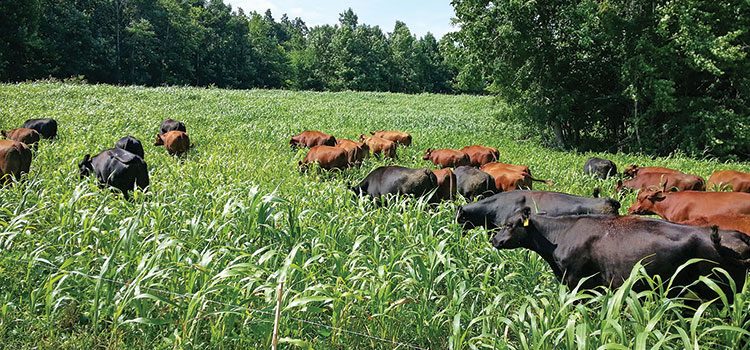Cover crops are seen as a saving grace for soil health, and livestock is a big key to adding diversity and working cover crops into an operation.
To help producers understand how cover crops play into cattle diets, South Dakota State University Extension hosted a talk on managing different forages at the Dakotafest farm show in Mitchell this summer.
Extension cow-calf specialist Adele Harty suggested treating a cover crop grazing paddock and a grass paddock in different ways.
Typically, producers should take forage samples, side by side, two to three days after turning the cattle over to the new grass pasture. With cover crops, samples should be taken shortly before grazing begins and in a grid pattern in order to sample all that cattle will nibble on in the field.
“It'll be way more representative of the mix you have in that covered field," she said.
Once the sample is taken of the new cover crop grazing pasture, Harty said many producers have been just blindly asking for NIRS, or near infrared reflectance spectroscopy, analysis instead of wet chemistry analysis like they should be doing for cover crops.
"Even an alfalfa grass mix should be used with wet chemistry. It may be 5 dollars more but the information you get from that will be a lot more reliable,” Harty said.
When the results come, Harty said it’s key to know exactly what nutrients your cattle require. Many cover crops actually go dramatically over the recommended limits. She said that almost every cover crop mix exceeds protein requirements for cattle, and some may even be poisoning the cattle. Even nitrate levels have been an issue recently, she said.
Many mixes do not have enough dry matter mix. Some popular cover plants are 90% water, and that can cause a lack of fiber for the livestock. Producers tend to pick the cheapest option when it comes to cover crop mixes, and that almost never works out well in the end, Harty added.





Post a comment
Report Abusive Comment